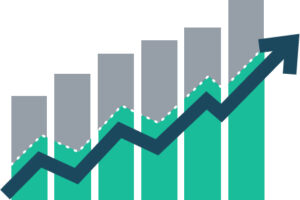Digital Reinvention Fuels Fast-growing Luxury Sector
Luxury goods have long evoked craftsmanship and exclusivity. Now digital transformation and shifting demographics are changing the way luxury good companies interact with their customers. We believe demand will remain robust. And in an environment of broadly higher inflation, the sector could sustain the pricing power it has commanded for decades.
The power of the wealth effect
The luxury market’s growing consumer base is increasingly concentrated among the wealthy, whose spending is less sensitive to economic downturns. The wealthiest 2% of global consumers accounted for 40% of luxury spending in 2022, up from 35% in 2009, according to analysts at Bain & Co. Bain projects that the global luxury market reached €1.5 trillion in 2023, an 8-10% increase over 2022.
Generational shift
As the industry’s digital shift helps spur new customer engagement, a generational shift is underway as well. By 2030, millennials (born between 1981 and 1996) will account for 50-55% of luxury market purchases, while Gen Z (born between 1997 and 2012) will account for 25-30% of luxury market purchases. Post-pandemic, we see more younger consumers with a growing interest in sustainable lifestyles. This sensibility plays well to the luxury sector’s appeal – “buy less, buy better.”
Pent-up demand, drawn-down savings
U.S. households seem set to continue spending, especially those at the top end of the income spectrum. The recovery in equity markets this year has pushed net worth of the top 10% back toward all-time highs. Interest income from higher yielding assets should augment income. Home equity is the equivalent of 116% of GDP, a staggering ratio by historical standards. Ultimately, luxury good sales will be a function of underlying demand, not of the ability of U.S. households to pay.
Attractive investor entry point
Of course, spending on luxury goods is not immune to the economic cycle, even for wealthy consumers. Amid uncertainty about the economy, luxury stocks sold off in recent months. The top 10 names lost $150 billion in market value, or roughly 13%, since the end of March. Investors looking to benefit from the industry’s long-term growth prospects may find an attractive entry point.
Source: J.P. Morgan Private Bank, December 19, 2023 Digital reinvention fuels a fast-growing sector By Jacob Manoukian, U.S. Head of Investment Strategy, J.P. Morgan Private Bank.

